#ClickThroughRates
Explore tagged Tumblr posts
Text
Google AI Overviews Are Hurting Click-Through Rates: Studies

Studies reveal Google's AI Overviews are reducing click-through rates, raising concerns for content creators and website traffic. https://jpmellojr.blogspot.com/2025/04/google-ai-overviews-are-hurting-click.html
0 notes
Text
The Impact of Page Titles and Meta Descriptions on Click-Through Rates (CTR)
When it comes to search engine optimization (SEO), page titles and meta descriptions play a pivotal role in attracting clicks from search engine results pages (SERPs). While they don’t directly affect rankings, their impact on click-through rates (CTR) is undeniable. A well-crafted title and meta description can entice users to click on your link, driving more traffic to your website and improving overall visibility. In this blog, we’ll explore how page titles and meta descriptions influence CTR and offer actionable tips for optimization.
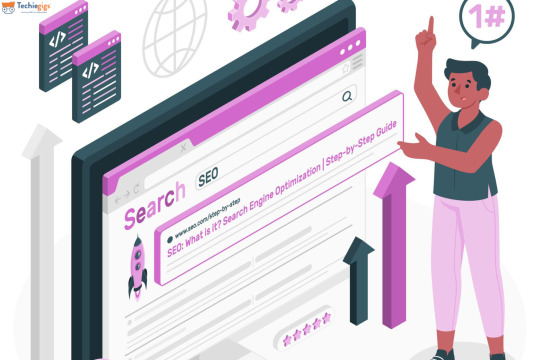
Why Are Page Titles and Meta Descriptions Important for CTR?
First Impression in Search Results Page titles and meta descriptions are the first things users see when they encounter your content on SERPs. They act as a preview, giving users a reason to click on your link over others.
Clear Communication of Content A concise and accurate title paired with an engaging meta description helps users understand what your page offers, setting clear expectations.
Driving User Intent By aligning your titles and descriptions with user intent, you can attract the right audience, reducing bounce rates and increasing engagement.
Best Practices for Optimizing Page Titles
Incorporate Primary Keywords Use relevant keywords naturally in your title to improve visibility and alignment with search queries.
Keep It Concise Limit your title to 50-60 characters to avoid truncation on SERPs.
Make It Engaging Create curiosity or provide a compelling value proposition to make users want to click.
Example: Instead of "Best Phones 2025," try "Top 10 Phones of 2025: Features You Can’t Miss."
Best Practices for Crafting Meta Descriptions
Stay Within the Length Limit Aim for 150-160 characters to ensure the entire description is visible on SERPs.
Highlight Key Benefits Mention what users will gain by clicking your link.
Use Active Voice and CTAs Encourage action with phrases like "Discover," "Learn More," or "Shop Now."
Example: "Discover the top-rated smartphones of 2025 with detailed reviews and comparisons. Find your perfect phone today!"
Real-World Impact: A Case Study
A website selling eco-friendly products saw a 35% increase in CTR after optimizing page titles and meta descriptions. They shifted from generic descriptions like “Shop Eco-Friendly Products” to more targeted and engaging ones such as “Top Eco-Friendly Products for Sustainable Living – Free Shipping Available.”
Common Mistakes to Avoid
Keyword Stuffing Overloading titles and descriptions with keywords can harm readability and deter users.
Misleading Information Ensure your title and description accurately represent your content. Misleading users leads to higher bounce rates.
Ignoring Mobile Optimization Check how your titles and descriptions appear on mobile devices to ensure they are not truncated.
Conclusion
Page titles and meta descriptions may seem like small details, but their impact on CTR is significant. They serve as the gateway to your website, influencing how users perceive your content in search results. By following best practices and focusing on user intent, you can create titles and descriptions that not only boost CTR but also enhance the overall performance of your site.
#SEO#ClickThroughRates#PageTitles#MetaDescriptions#DigitalMarketing#SEOOptimization#ContentMarketing
0 notes
Text
Addressing Key Challenges in B2B Email Marketing: Solutions for Low Open Rates, Poor Engagement, Segmentation, and Deliverability
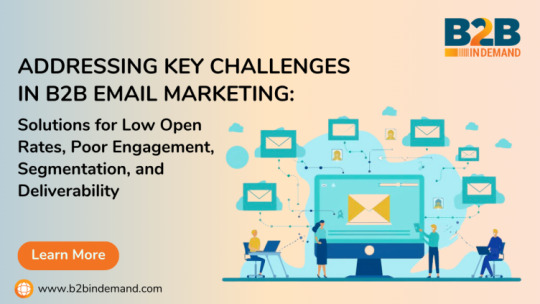
Introduction: Email marketing continues to be one of the most effective B2B strategies for lead generation and customer engagement. However, common challenges can hinder success, such as low open rates, poor engagement, segmentation issues, and deliverability problems. In this article, we’ll dive into these key challenges and explore practical solutions to overcome them, helping you optimize your B2B email marketing efforts.
1. Low Open Rates: How to Boost Your Email Open Rate
One of the most widespread issues in B2B email marketing is low open rates. If recipients aren’t opening your emails, they won’t engage with your message.
Solution:
Optimize Subject Lines: Make your subject lines attention-grabbing but concise. Use curiosity or offer a benefit that resonates with your audience’s pain points.
Personalization: Add the recipient’s name or company in the subject line to increase relevance.
Test Send Times: Experiment with different send times to find when your audience is most likely to open emails, as timing can significantly impact open rates.
A/B Testing: Regularly test various subject lines, personalization techniques, and email formats to discover what works best for your specific audience.
2. Poor Engagement/Click-Through Rates: Strategies to Boost Engagement
Even when emails are opened, low engagement and click-through rates signal that your content isn't resonating with your audience.
Solution:
Clear Call-to-Actions (CTAs): Ensure that your CTAs are visible, actionable, and relevant to the email content. Keep them concise and use strong action verbs to encourage clicks.
Deliver Value: Make sure every email offers value—whether that’s in the form of a resource, insights, or an offer that aligns with the recipient’s needs.
Audience Segmentation: Tailor your emails to different audience segments. More relevant content leads to higher engagement.
Use Interactive Elements: Incorporate quizzes, polls, or clickable images to make emails more interactive and engaging.
3. List Segmentation and Targeting: How to Segment for Success
Sending the same email to your entire list is a recipe for disengagement. Poor segmentation leads to irrelevant messaging that doesn’t speak to specific audience needs.
Solution:
Segment by Behavior: Use data on past purchases, website visits, or interactions to group contacts and send targeted messages based on their actions.
Demographic Segmentation: Tailor content based on demographic information like industry, role, or company size to improve relevance.
Refine with A/B Testing: Test different content, messaging, or offers across your segments to learn what resonates with each group.
Dynamic Content: Incorporate dynamic elements into your emails that change based on the recipient’s segment or preferences.
4. Deliverability Issues: How to Improve Email Deliverability
Deliverability issues can prevent your emails from reaching recipients' inboxes, impacting your overall campaign effectiveness.
Solution:
Clean Your List Regularly: Remove inactive subscribers to maintain a high-quality list and improve deliverability.
Authenticate Your Emails: Use DKIM, SPF, and DMARC to authenticate your emails and boost your sender reputation.
Avoid Spam Triggers: Stay away from spammy language, excessive capitalization, or too many exclamation points, which can trigger spam filters.
Monitor Bounce Rates: Keep an eye on bounce rates and take steps to address hard bounces quickly.
Conclusion:
Overcoming the common challenges of B2B email marketing is key to driving better results and improving your lead generation efforts. By addressing low open rates, poor engagement, segmentation, and deliverability issues, your campaigns can become more effective, ensuring your messages reach the right people at the right time. Implementing these strategies will lead to higher engagement, improved conversions, and more successful email marketing campaigns.
#b2bmarketing#emailmarketing#marketingstrategy#leadgeneration#digitalmarketing#customerengagement#emailcampaigns#marketingautomation#emaildeliverability#marketingtips#clickthroughrates#emailopenrates#listsegmentation#businessgrowth#marketingchallenges#b2bindemand
0 notes
Text
Pay-Per-Click
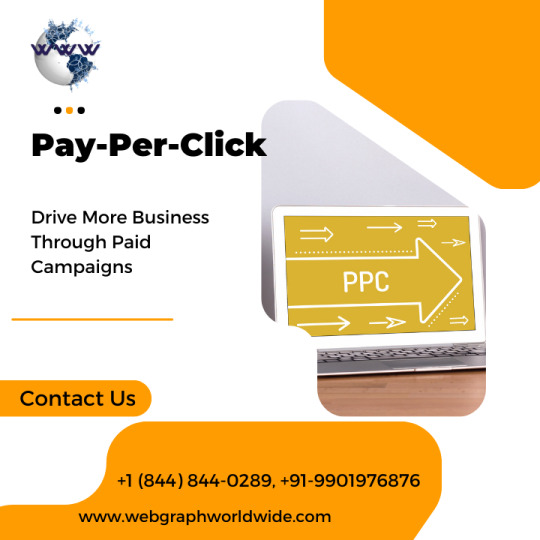
Webgraph Worldwide Provides PPC services for your businesses to drive traffic on your website and generate leads or sales. It requires a good understanding of the target audience, relevant keywords, and ad copy that resonates with potential customers. We have experts to consultants recommended to manage your campaigns effectively. Contact Us Now +1 (844) 844-0289, +91-9901976876 https://webgraphworldwide.com
#WebGraphWorldwide#PPCServices#OnlineAdvertising#DigitalMarketing#PayPerClick#ROIBoost#AdCampaigns#KeywordResearch#AdCopywriting#PPCExperts#ConversionRates#ClickThroughRates#DataDriven#AdOptimization#DigitalAdvertising#OnlinePromotion#PPCStrategy#WebGraphAdvantage#TopAdResults#DigitalDominance#WebGraphSolutions#OnlineGrowth#PPCExcellence#WebGraphWay#PPCSuccess#OptimizeAds#AdVisibility
0 notes
Text

📸 5 Proven Thumbnail Tips to Skyrocket Your YouTube CTR 🚀
You spent hours filming and editing. Your content is solid. But the views? Still not where they should be. Here’s the harsh truth: If your thumbnail doesn’t stop the scroll, people won’t click — no matter how good your video is.
Wanna stand out on YouTube in 2025? 🔥 These 5 thumbnail tips are what top creators use to boost clicks and grow fast:
🔹 1. Big, Bold Text Use clear, bold fonts. Keep it under 5 words. If viewers can’t read it at a glance, they’ll keep scrolling.
🔹 2. Show Emotion Close-up faces with strong emotion (shock, joy, curiosity) grab attention way better than plain screenshots.
🔹 3. Use High-Contrast Colors Colors like yellow, red, and turquoise pop on both light and dark modes — and outperform muted tones.
🔹 4. Tease, Don’t Tell Don’t give away the full story. Use your thumbnail to spark curiosity — so viewers feel compelled to click.
🔹 5. Build a Visual Brand Use consistent fonts, colors, and layout styles across your thumbnails. It makes your content feel cohesive and pro.
🎯 Want scroll-stopping thumbnails — without stressing over Photoshop?
I’ve curated top-rated Fiverr designers who create high-converting YouTube thumbnails trusted by small creators and growing influencers alike.
👉 Check the link in my bio to find a style that fits your brand (affordable + fast delivery). 📌 A better CTR might be just one thumbnail away.
#youtubetips#contentcreation#thumbnaildesigner#growyourchannel#small youtuber#clickthroughrate#videomarketing#fiverraffiliate#marketingtools#tumblr tips#contentstrategy#visualbranding#designtips
0 notes
Text

Boost your business instantly with our result-driven PPC services. At Foinix Digital Services, we create high-converting Google Ads, search ads, and display ads to drive targeted traffic, leads, and sales. Our expert PPC management ensures maximum ROI by optimizing ad campaigns with the right keywords, bidding strategy, and compelling ad copies. Reach your audience at the right time and grow faster with our professional pay-per-click advertising solutions.
Whatsapp: +91 9441100849
ppc services in hyderabad, ppc services near me, ppc services, ppc agency, ppc agency near me, ppc company, ppc agency in hyderabad, ppc services hyderabad, ppc services company in hyderabad, ppc ad agency in hyderabad, best ppc services in hyderabad, ppc management company in hyderabad, best ppc ad agency in hyderabad, ppc company in hyderabad, best ppc ad agency services in hyderabad, ppc companies in hyderabad, best ppc companies in hyderabad, ppc company hyderabad, google ads services in hyderabad
#PPC#PPCServices#PayPerClick#GoogleAds#AdWords#PPCMarketing#DigitalMarketing#OnlineMarketing#SEM#SearchAds#DisplayAds#PaidAds#MarketingStrategy#LeadGeneration#PerformanceMarketing#MarketingExperts#AdCampaign#TargetedAds#PPCExperts#MarketingAgency#DigitalGrowth#BusinessMarketing#ClickThroughRate#WebsiteTraffic#ConversionRate#GoogleAdExperts#MarketingSolutions#FoinixDigital#MarketingForBusiness#ROIboost
0 notes
Text

Boost your business instantly with our result-driven PPC services. At Foinix Digital Services, we create high-converting Google Ads, search ads, and display ads to drive targeted traffic, leads, and sales. Our expert PPC management ensures maximum ROI by optimizing ad campaigns with the right keywords, bidding strategy, and compelling ad copies. Reach your audience at the right time and grow faster with our professional pay-per-click advertising solutions.
Whatsapp: +91 9441100849
kansas city seo ppc marketing services, best ppc companies in kansas, pay per click marketing agency kansas city, google ads agency kansas city, ppc agency near me kansas city, best pay per click companies kansas city, internet marketing kansas city, kansas ppc company, ppc company kansas city, pay per click agency kansas city, pay per click advertising company kansas city, ad agency kc, ppc marketing kansas city, ppc companies kansas city, kansas city ppc company, pay per click marketing kansas city, ppc services kansas city, kansas city pay per click, ppc company in kansas city, kansas city ppc services, kansas city ppc agency, ppc companies in kansas city, ppc agency kansas city, ppc agency kansass city, pay per click advertising companies kansas city, kansas city pay per click marketing, advertising pay per click kansas city, digital advertising in kansas
#PPC#PPCServices#PayPerClick#GoogleAds#AdWords#PPCMarketing#DigitalMarketing#OnlineMarketing#SEM#SearchAds#DisplayAds#PaidAds#MarketingStrategy#LeadGeneration#PerformanceMarketing#MarketingExperts#AdCampaign#TargetedAds#PPCExperts#MarketingAgency#DigitalGrowth#BusinessMarketing#ClickThroughRate#WebsiteTraffic#ConversionRate#GoogleAdExperts#MarketingSolutions#FoinixDigital#MarketingForBusiness#ROIboost
0 notes
Text
HDMS041: WTF Is Click-Through Rate??? A Comedian’s Guide to Paid Media Math
You ever look at your reel analytics and feel like you’re reading the Matrix?
Like… what do you mean 17,000 impressions but only 3% reached the CTA? And why does “click-through rate” sound like something a bro-y podcast host would say while selling crypto?
Welcome to the world of paid media metrics—where everything sounds made up but is actually real, terrifying, and kind of useful if you don’t ignore it like I did for the first half of my creative career.
In this module, we finally start breaking down the numbers behind digital ads. Not in a “finance bros take Manhattan” way, but in a here’s how you know if your campaign actually did anything kind of way. It’s about figuring out:
What to track
Why it matters
And how to not cry when the numbers don’t look how you expected
As someone who has spent many years pretending math isn’t real (shoutout to the arts), I’m here to decode this for you—comedian-style. Whether you’re launching a tour, a newsletter, a podcast, or just trying to get more eyes on your face, this is the marketing math that actually matters.
Let’s do it. No spreadsheets required (yet).
I. Why We Measure
So here’s the thing: running a paid media campaign without tracking your metrics is like telling jokes to a silent crowd and refusing to acknowledge the silence. “No no, I thought it was funny. That’s enough.” (It’s not.)
The whole point of measuring stuff—clicks, conversions, cost per whatever���is to make sure you’re not throwing money into the void. Paid media isn’t just about showing up. It’s about knowing what happens after you show up.
Different stages of your marketing funnel = different goals = different metrics:
Top of funnel (awareness)? You’re looking at impressions and reach. Did they see you?
Mid-funnel (consideration)? Time to check click-through rate (CTR). Did they care enough to engage?
Bottom of funnel (conversion)? Let’s talk cost per order, revenue, return on ad spend. Did they buy? Did you eat?
And the wild part? Just because someone sees your ad (hi, impression), doesn’t mean they click. Just because they click, doesn’t mean they buy. And just because they buy… well, congrats—you’re officially in business.
The key is choosing the right metric for your goal. Because if you’re judging your brand awareness campaign by purchase numbers, you’ll think it failed. When really, it wasn’t even trying to convert—it was just trying to get you noticed.
So metrics = clarity. And clarity = power. (Also money, obviously.)
II. Branded vs. Generic Keywords (aka: Do They Know You??? Or Are They Just Looking for Laughs???)
Let’s break it down with some marketing lingo that sounds scarier than it is:
Generic keywords = people searching for the category, not you specifically. Like someone Googling “funny Toronto stand-up show.”
Branded keywords = people searching for you. “Laura Ferinot comedy show tickets.” (Hi, obsessed!)
OOFOS tracks both. Why? Because they do different jobs:
Generic keywords get more impressions—more people are casually searching “shoes for foot pain.”
Branded keywords get higher click-through rates—because if someone already searched “OOFOS recovery shoes,” they’re probably ready to buy.
In comedy terms:
A flyer that says “Live Stand-Up Comedy Tonight!” will reach more randoms.
One that says “Laura Ferinot Live at Comedy Bar!” will pull in people who already like your vibe (or saw that reel where you called someone out mid-set and need to know more).
You want both. You want to meet new people and serve the ones who already love you.
So OOFOS uses branded search ads to scoop up the ready-to-buy folks. And they use generic ones to pull new folks into the funnel. The trick is knowing which is doing what—and not expecting your “funny show in Toronto” ad to convert like a personal invite.
Because just like in comedy: context is everything.
III. The Math Breakdown (Explained for Creative Brains Who Hate Math)
Alright, let’s slow this all the way down.
You’ve got $100,000 to spend on ads. The question is: what do you get for it? That’s what all these scary-sounding metrics are trying to answer.
We’re gonna walk through it step by step, with no pressure to “get it” on the first read.
Step 1: How many people saw the ad?
This is called impressions. Basically: how many eyeballs passed by the ad.
You pay $2 for every 1,000 impressions. So if you have $100,000 to spend, here’s what happens:
You can buy 50,000 bundles of 1,000 views (because 100,000 divided by 2 = 50,000)
50,000 x 1,000 = 50 million impressions
So: your ad was shown 50 million times.
Step 2: How many people clicked the ad?
This is called click-through rate (CTR). For this campaign, let’s say that 0.5% of people clicked.
That means:
For every 100 people who saw the ad, only half a person clicked. (So yeah, it’s a small number.)
Out of those 50 million impressions, that equals 250,000 clicks.
So: 250,000 people clicked the ad.
Step 3: How many of those people bought something?
This is called conversion rate. Let’s say 2% of the people who clicked actually bought.
That means:
For every 100 people who clicked, 2 made a purchase
So: 250,000 x 2% = 5,000 orders
So: 5,000 people bought a pair of OOFOS shoes.
Step 4: How much did each sale cost you in ad money?
This is called cost per order (CPO). It’s just: how much you spent divided by how many people bought.
So: $100,000 divided by 5,000 = $20 per sale
That means: it cost you $20 in ads to make each sale.
Step 5: How much money did you make total?
Each pair of shoes sells for $100. You sold 5,000 pairs.
5,000 x $100 = $500,000 in revenue
So: you made $500,000 from a $100,000 ad spend.
That’s 5x what you spent. In marketing land, that’s very good.
The Bottom Line:
You don’t have to memorize formulas. You don’t need to love math. You just need to understand the flow:
How many people saw the thing?
How many clicked on it?
How many actually bought it?
Was it worth the money you spent?
That’s it. That’s all this is.
And now you know what those scary acronyms are really measuring.
IV. My Takeaway (For Creatives, Comedians, and Neurodivergent Brains)
Let’s be real: I didn’t get into comedy to do math.
But this module helped me realize that metrics aren’t the enemy. They’re just mirrors—reflecting what’s working, what’s not, and where the audience is saying “yes, more please!!!!!!!!!”
If you’re a comedian or creative trying to grow your audience, sell tickets, launch a project, or get people to click that dang link in bio… these numbers actually matter.
What hit me most was this: You don’t need to be a data nerd. You just need to know the path from “seen” to “sold.”
That path looks like:
Did people see your thing???? (Impressions)
Did they care enough to click????? (CTR)
Did they follow through and commit???? (Conversion rate)
Was it worth the money/energy you spent???? (CPO + Revenue)
You don’t need to measure everything all at once. You don’t even need to understand it all today. You just need a system that helps you notice patterns.
And if your brain is like mine—aka AuDHD, possibly with a sprinkle of dyscalculia—here’s what I’ve learned:
Don’t try to do this in your head. Ever. Externalize the numbers. Write them down, speak them out loud, put them in a chart—whatever works for you.
Pick one or two metrics to track at a time. Not seven.
Let the math show you something, not shame you. A low click-through rate isn’t a moral failure—it’s a clue.
If you struggle to visualize things, try drawing them out. Use color, arrows, post-its—make it tactile.
And most importantly: you don’t have to do it alone. Ask for help. Use tools. Build supports. Even this post is a support.
The whole point of measuring is not to impress anyone. It’s to understand your impact—and then adjust.
TL;DR On Media Math for Comedians
So yeah—click-through rates, conversion percentages, cost per order… it all sounds intimidating until you realize it’s just a way of asking: Did the thing I made actually connect with people?
And if it didn’t, cool. Now you know. And you can try something else.
Metrics aren’t here to scare you. They’re here to support your creativity—so you can keep doing the wild, wonderful, chaotic stuff you love, but smarter.
Keep tracking. Keep testing. Keep learning. Even if the numbers feel blurry sometimes, you’re still moving forward.
Tchauuu tchauuuuu!!! :**
#DigitalMarketingStrategy#HarvardDMS#PaidMediaMetrics#CreativeMarketing#MarketingForArtists#NeurodivergentCreatives#ComedianLife#AnalyticsForCreatives#ClickThroughRate#MarketingMathWithoutTheStress#WTFIsCTR
0 notes
Text
Preview Your Google Snippet & Optimize It with WebsAudit
Curious how your website appears in Google search results? WebsAudit’s Google Search Preview Tool gives you a real-time snippet view of your meta title, description, and URL before they go live. Easily adjust and optimize meta tags to enhance visibility, increase click-through rates (CTR), and ensure they follow SEO best practices. Whether you're a marketer, blogger, or business owner, this tool helps you craft compelling search listings for maximum engagement. Test your snippet now!
#GoogleSearchPreview#MetaTags#SEOOptimization#ClickThroughRate#SEOBestPractices#SnippetPreview#SEOtips
0 notes
Text
Pay-Per-Click (PPC) Advertising: A Powerful Strategy for Business Growth

In today's highly competitive digital marketplace, businesses need innovative and result-driven strategies to enhance their online presence, attract customers, and boost sales. One of the most effective methods for achieving these goals is pay-per-click (PPC) advertising. With PPC, businesses can target specific audiences, control their budgets, and achieve measurable results in a short period.
If you are looking for professional PPC services to grow your business, JPP Tech offers expert Pay-Per-Click management solutions designed to maximise conversions and optimise your marketing investment.
What is pay-per-click (PPC) advertising?
PPC is a digital advertising model in which advertisers pay a fee each time their ad is clicked. Instead of relying solely on organic traffic, businesses can bid for ad placements on search engines, social media platforms, and display networks to drive targeted traffic to their websites.
PPC campaigns can appear in various formats, including:
Search Ads: These appear on search engine results pages (SERPs) when users enter relevant keywords.
Display Ads: Visual-based ads that appear on various websites, apps, and Google Display Network.
Social media ads: paid promotions on platforms like Facebook, Instagram, LinkedIn, and Twitter.
Shopping Ads: product-based ads that appear on Google Shopping and other eCommerce platforms.
Video Ads: Short commercials displayed on platforms like YouTube.
Remarketing Ads: ads that target users who have previously visited your website.
Why is PPC essential for businesses?
PPC advertising offers several advantages over traditional and organic marketing methods. Here’s why businesses should invest in PPC campaigns:
1. Immediate Results
Unlike SEO, which takes months to build traffic, PPC campaigns start driving visitors to your website as soon as they go live. This makes PPC a great option for businesses looking for quick visibility and fast results.
2. Highly Targeted Advertising
With PPC, you can control who sees your ads based on factors like location, demographics, search intent, interests, and even past behaviour. This level of precision ensures that your marketing budget is spent on reaching the right audience.
3. Cost-Effective Marketing
PPC allows businesses to set their own budgets and bid on specific keywords. Since you only pay when someone clicks on your ad, you can control costs while optimising for better performance.
4. Measurable & Trackable Results
PPC platforms like Google Ads and Facebook Ads provide detailed analytics on impressions, clicks, conversions, and ROI. This data allows businesses to fine-tune their campaigns and improve results continuously.
5. Enhances Brand Awareness
Even if users don’t click on your ad, they still see your business name and message, increasing brand recognition. The more frequently your ads appear, the more familiar potential customers become with your brand.
Types of PPC Campaigns
To maximise PPC effectiveness, businesses must choose the right campaign type that aligns with their goals. Here are some of the most popular PPC campaign types:
1. Search Ads
Search ads are text-based ads that appear at the top of search engine results when users type relevant keywords. These are highly effective for businesses looking to target customers actively searching for their products or services.
2. Display Ads
Display ads use images, banners, and videos to attract attention across websites and apps. These ads are great for brand awareness and retargeting potential customers.
3. Social Media Ads
Social media advertising allows businesses to place paid promotions on platforms like Facebook, Instagram, LinkedIn, and Twitter. These ads are highly customisable and can target users based on interests, behaviours, and demographics.
4. Shopping Ads
Google Shopping Ads allow eCommerce businesses to showcase their products at the top of search results, complete with images, prices, and ratings. These ads help attract buyers who are ready to make a purchase.
5. Video Ads
Video ads on platforms like YouTube engage audiences through short and compelling commercials. These ads are highly effective in storytelling and building brand trust.
6. Remarketing Ads
Remarketing ads target users who have previously interacted with your website but didn’t complete a desired action (like making a purchase). These ads help bring potential customers back and improve conversion rates.
How JPP Tech Can Help with PPC Advertising
At JPP Tech, we specialise in creating high-performance PPC campaigns that generate leads, increase sales, and enhance brand visibility. Our services include:
✅ Comprehensive Keyword Research—Identifying profitable keywords for your business. ✅ Strategic Bid Management: Optimising ad spending to maximise conversions. ✅ Engaging Ad Copywriting: Crafting compelling ad content that drives clicks. ✅ Landing Page Optimisation: Enhancing website pages for better conversions. ✅ A/B Testing & Analytics: continuously refining campaigns for improved performance.
Conclusion
PPC advertising is one of the most effective digital marketing strategies for businesses looking to gain instant visibility and drive targeted traffic. When managed correctly, PPC can provide a significant return on investment and help businesses achieve their marketing goals.
If you're ready to take your business to the next level with PPC advertising, JPP Tech is here to help. Our expert team ensures that every dollar spent on ads is optimised for maximum performance.
🚀 Start your PPC campaign today with JPP Tech!
#PPCAdvertising#BusinessGrowth#DigitalMarketing#OnlineAdvertising#PPCStrategy#MarketingTips#AdWordsSuccess#SEM#ClickThroughRate#ROI#LeadGeneration#PPCCampaign#PaidSearch#AdSpend#GoogleAds#PPCManagement#SearchEngineMarketing#TargetedAdvertising#CostPerClick#MarketingROI
0 notes
Link
🚀 Are ChatGPT Users Clicking Links? Brands Say YES!
Discover how AI-driven conversations are boosting clicks and reshaping brand strategies. 💡 Is this the future of engagement?
👉 Read more: https://thevirtualupdate.com/are-people-clicking-links-in-chatgpt-search-brands-say-yes/
1 note
·
View note
Text
The Role of CTR in Paid Search Campaigns: How to Optimize Your Ads
In the competitive world of paid search advertising, businesses are constantly looking for ways to get the most out of their ad spend. One of the most important metrics for measuring the effectiveness of these campaigns is Click-Through Rate (CTR). But what exactly is CTR, why does it matter, and how can you optimize your ads to boost this essential metric?
What is CTR?
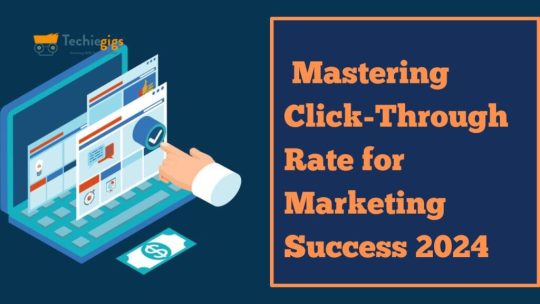
Click-Through Rate (CTR) is the percentage of users who click on your ad after seeing it. It is calculated by dividing the number of clicks by the number of impressions (how many times your ad is shown) and multiplying by 100. A high CTR generally indicates that your ads are relevant, engaging, and appealing to your target audience.
For example, if your ad receives 100 clicks and 10,000 impressions, your CTR would be 1% (100 clicks ÷ 10,000 impressions × 100).
Why is CTR Important?
CTR is a key performance indicator (KPI) for the following reasons:
Quality Score Impact: In Google Ads, your CTR directly influences your Quality Score. A higher CTR can lead to a better Quality Score, which can lower your cost-per-click (CPC) and improve your ad’s positioning.
Relevance of Ads: A strong CTR suggests that your ad copy and keywords are well-matched to the needs and interests of your audience. If users are clicking, it means your ads are speaking to the right people.
Cost Efficiency: Since Google Ads and other platforms often reward higher CTR with lower CPC, optimizing your CTR can reduce your advertising costs while maintaining ad visibility.
How to Optimize Your Ads for Better CTR
Optimizing CTR requires a combination of strategic tactics. Here are some actionable steps to help improve your ad performance:
1. Craft Compelling Ad Copy
Use Clear and Actionable Language: Your ad copy should clearly state what the user will get by clicking on your ad. Use action words like “Buy Now,” “Get a Free Quote,” or “Learn More.”
Highlight Unique Selling Points (USPs): Showcase what sets your business apart. If you offer a special discount, free shipping, or unique features, make sure they stand out in your ad.
Incorporate Keywords: Ensure your ad copy aligns with the keywords you’re targeting. This boosts relevancy and increases the chances of attracting interested clicks.
2. Optimize Your Ad Extensions
Site Link Extensions: These additional links give users more options to click on, increasing the likelihood of a click on your ad.
Call Extensions: Including a phone number directly in your ad can improve CTR, especially for mobile users.
Location Extensions: If you have a physical store, adding location information can help users find your business, especially when they are looking for something nearby.
3. Target the Right Audience
Refine Your Keywords: Use keyword research to understand what your audience is searching for, and avoid targeting irrelevant terms. Negative keywords can help filter out irrelevant traffic.
Use Demographic Targeting: Customize your ads based on age, gender, income level, and location to ensure they resonate with the right audience.
4. Test and Iterate
A/B Testing: Regularly run A/B tests to compare different ad variations. Test headlines, descriptions, and calls to action to see what resonates best with your audience.
Monitor Analytics: Continuously analyze your CTR and other performance metrics. Adjust your bidding strategy, ad copy, and targeting based on what works.
5. Ensure Mobile Optimization
Mobile-Friendly Ads: Since a large portion of searches come from mobile devices, ensure your landing page and ad copy are optimized for mobile users. Mobile-friendly content encourages higher engagement and better CTR.
6. Improve Landing Page Experience
A great CTR means nothing if users land on a page that doesn’t deliver. Ensure your landing page is relevant to your ad, loads quickly, and provides a seamless user experience. A consistent experience from ad click to landing page leads to better conversion rates.
Conclusion
Click-Through Rate (CTR) is more than just a vanity metric in paid search campaigns. It directly impacts the effectiveness, cost-efficiency, and overall success of your ads. By crafting compelling ad copy, optimizing your targeting, testing different variations, and ensuring a smooth mobile and landing page experience, you can significantly boost your CTR and improve the ROI of your paid search campaigns.
#Hashtags for Social Media#PaidSearch#PPC#ClickThroughRate#DigitalMarketing#AdOptimization#GoogleAds#SearchEngineMarketing#CPC#AdPerformance#OnlineAdvertising#SEM#DigitalAds#CTROptimization
0 notes
Video
youtube
What Is CTR? Why Is it so important? How To Boost CTR!
CTR is essential for channel growth and it is easier than you think. The Internet Marketing Training Channel by George Pierce is about helping you make money online as easily and quickly as possible with little to no cost. Do not miss a video. Join the channel so Mr. P can let you know when new uploads are made. https://youtube.com/@georgepierce
0 notes
Text
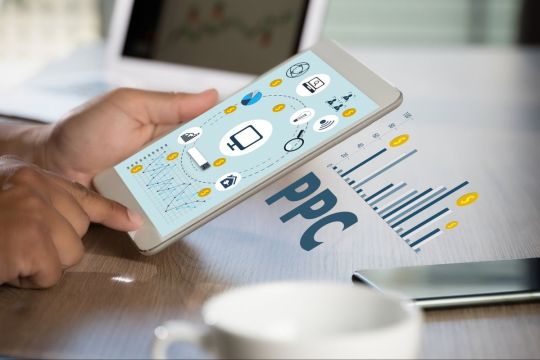
1. Introduction to Modulation Digital Agency
A brief overview of Modulation as a leading digital agency based in Delhi, Delhi NCR.
Core focus on innovation, creativity, and delivering results-driven digital solutions.
Emphasize the experience of working with SMBs, startups, and enterprises to help them improve their online presence.
2. Why Pay-Per-Click (PPC) is Important for Businesses Now:
Explain PPC and how it drives targeted traffic and leads.
Benefits of PPC for businesses:
Instant visibility on search engines and social media sites.
Cost-efficient promotion with measurable outputs.
It is apt for growing business enterprises seeking rapid acceleration in a very competitive industry landscape.
3. Specialisation in Modulation in PPC Services
Why Modulation stands out to be one of the best pay-per-click service provider in Delhi, Delhi NCR:
PPC professional with suitable certificates and years of experiences.
Campaign designs are tailored exactly according to your business aims.
Experienced knowledge of multiple PPC platforms: Google Ads, Bing Ads, and social media ads.
Focus on optimizing the highest ROI by maintaining thorough control over campaigns and optimizing the process.
4. Our Pay-Per-Click Process
Step 1: In-Depth Research and Strategy Development
Competitor analysis, audience targeting, keyword research
Step 2: Campaign Setup and Creative Ad Design
Crafting compelling ad copy and designing attention-grabbing visuals.
Step 3: Ongoing Monitoring and Optimization
Real-time performance tracking and adjustments to maximize effectiveness.
Step 4: Transparent Reporting
Detailed reports on campaign performance and ROI to keep clients informed.
5. Success Stories
Examples of real-life businesses that have experienced phenomenal growth through Modulation's PPC services.
Testimonials from satisfied clients who have been able to share their experience and results.
6. Why Choose Modulation for Your PPC Needs? .
Track record of delivering outstanding results for clients in Delhi, Delhi NCR.
personalized approach to ensure campaigns align with the brand's objectives.
Competitive pricing and value-added services, including consulting and digital marketing strategy support.
7. Get Started Today
Call-to-action inviting businesses to partner with Modulation for the best pay-per-click service provider in Delhi, Delhi NCR.
Contact information and links to book a consultation or request a free PPC audit.
#digitalmarketing#seo#ppc#socialmediamarketing#emailmarketing#onlinemarketing#businesssolutions#digitaltransformation#innovation#webdesign#PayPerClick#PPCMarketing#DigitalMarketing#OnlineAdvertising#AdCampaign#SEO#GoogleAds#SocialMediaAds#MarketingStrategy#TrafficBoost#ROI#LeadGeneration#SponsoredContent#AdvertiseOnline#ClickThroughRate#ConversionRate#MarketingTips#BusinessGrowth#PPCStrategy#PerformanceMarketing
0 notes
Text
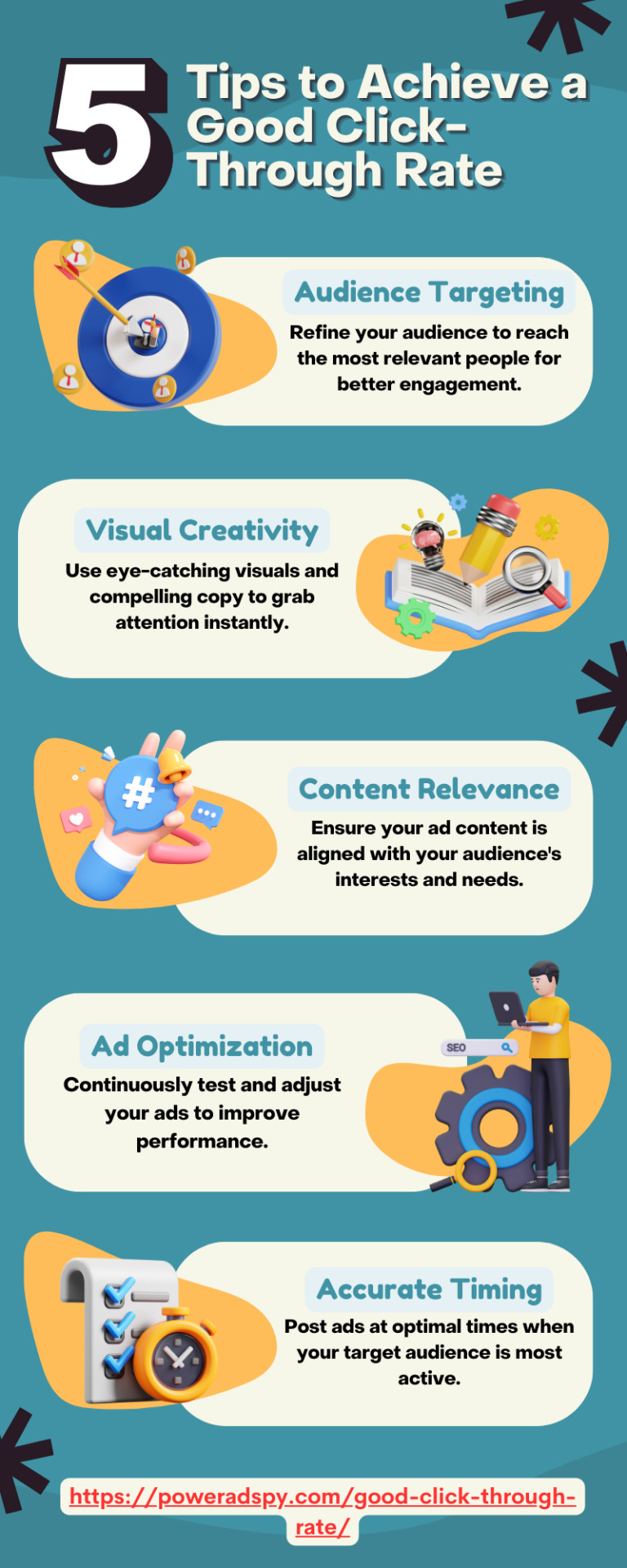
This Infographic will help you learn about how to achieve a Good Click-Through Rate.
0 notes
Text
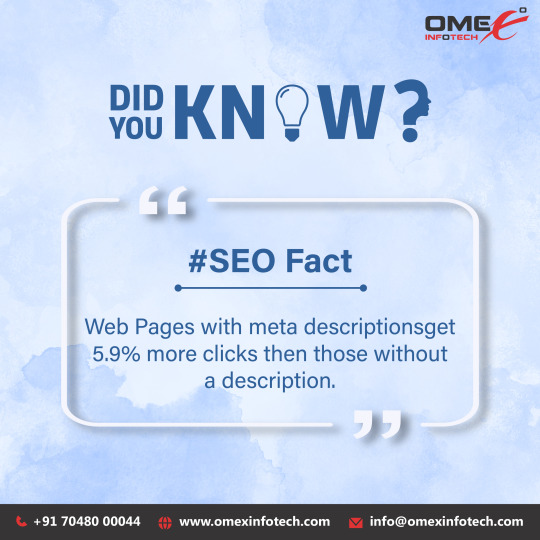
Did You Know? 🤔 #SEO Fact: Web pages with meta descriptions get 5.9% more clicks! 📈 Boost your click-through rate today with optimized meta descriptions. 🚀
Visit more about SEO visit us here now https://omexinfotech.com/seo-and-digital-marketing.html
#SEO 📊#SEOOptimization 🚀#DigitalMarketing 🌐#ClickThroughRate 📈#WebTraffic 📉#SEOFact 🔍#OnlineGrowth 📈#SearchEngineOptimization 🧑💻#ContentStrategy 📝#MarketingTips 💡
1 note
·
View note